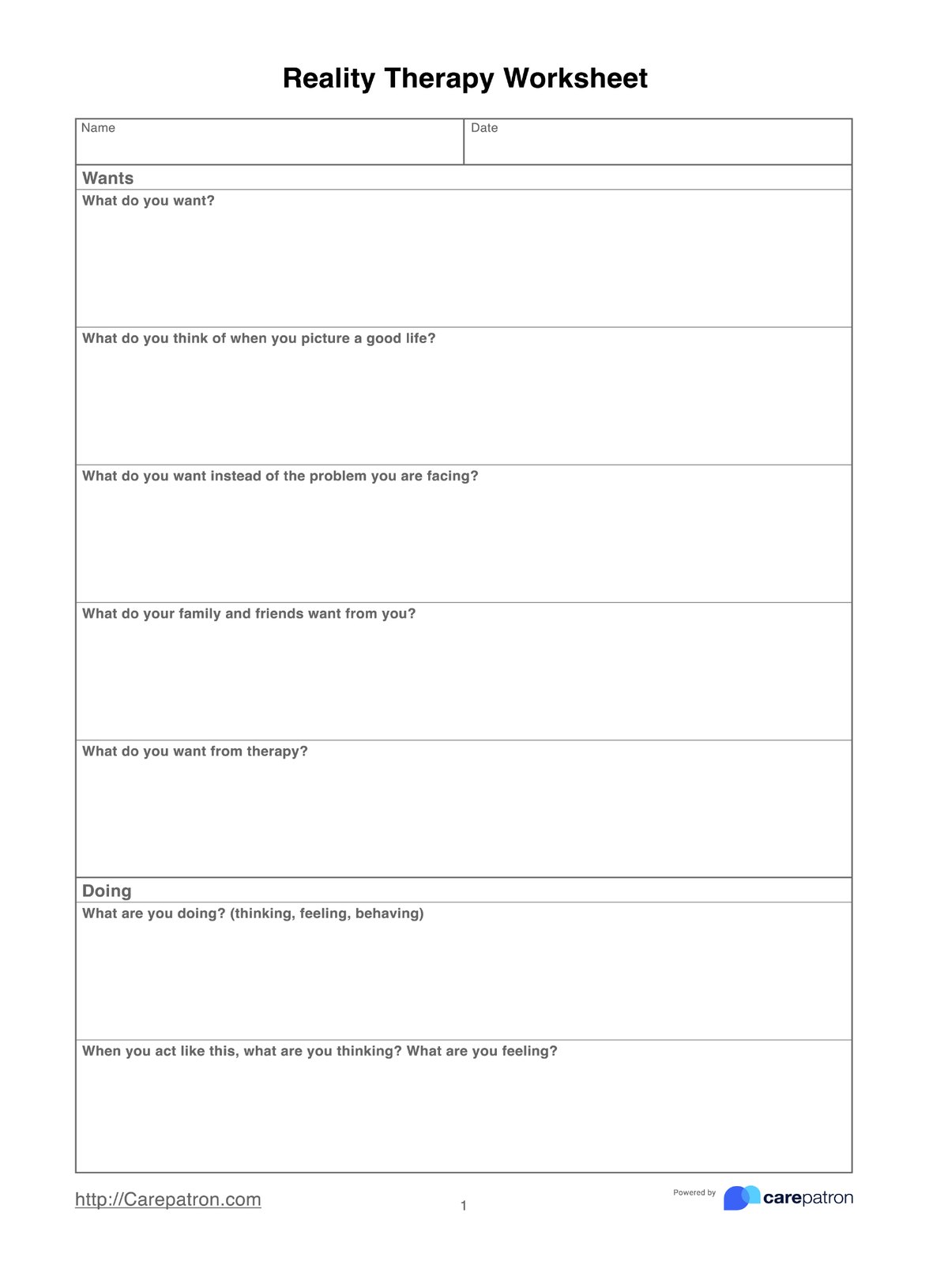When you use this reality therapy worksheet is entirely up to you. In order for it to be as effective as possible, we would recommend introducing it during the earlier stages of treatment, so the client is able to continuously work toward their goals. It’s also good to remember that treatment plans and general objectives can be fluid, so if a client changes their mind about what they are hoping to achieve, that is perfectly fine.

Reality Therapy Worksheets
A reality therapy worksheet that empowers clients to gain greater control in their life. This worksheet uses the WDEP model to improve communication, growth, and clinical outcomes.
Reality Therapy Worksheets Template
Commonly asked questions
The reality therapy worksheet that we have designed is separated into different WDEP sections. We have included individual questions within each of these sections that clients should be encouraged to answer. Although the more information and detail that a client includes the better, you may find yourself with a client who struggles to respond to every single question. This is definitely okay, and you should simply encourage your client to write down whatever they can.
The reality therapy worksheet is typically supposed to be completed by the client. However, if you are treating a client who isn’t capable of completing the worksheet by themselves, or perhaps they are simply confused by what the document is asking of them, then you could definitely complete it together. Just try and ensure that all of the answers on the worksheet are authentic and honest reflections of the client’s lived experiences.
EHR and practice management software
Get started for free
*No credit card required
Free
$0/usd
Unlimited clients
Telehealth
1GB of storage
Client portal text
Automated billing and online payments











